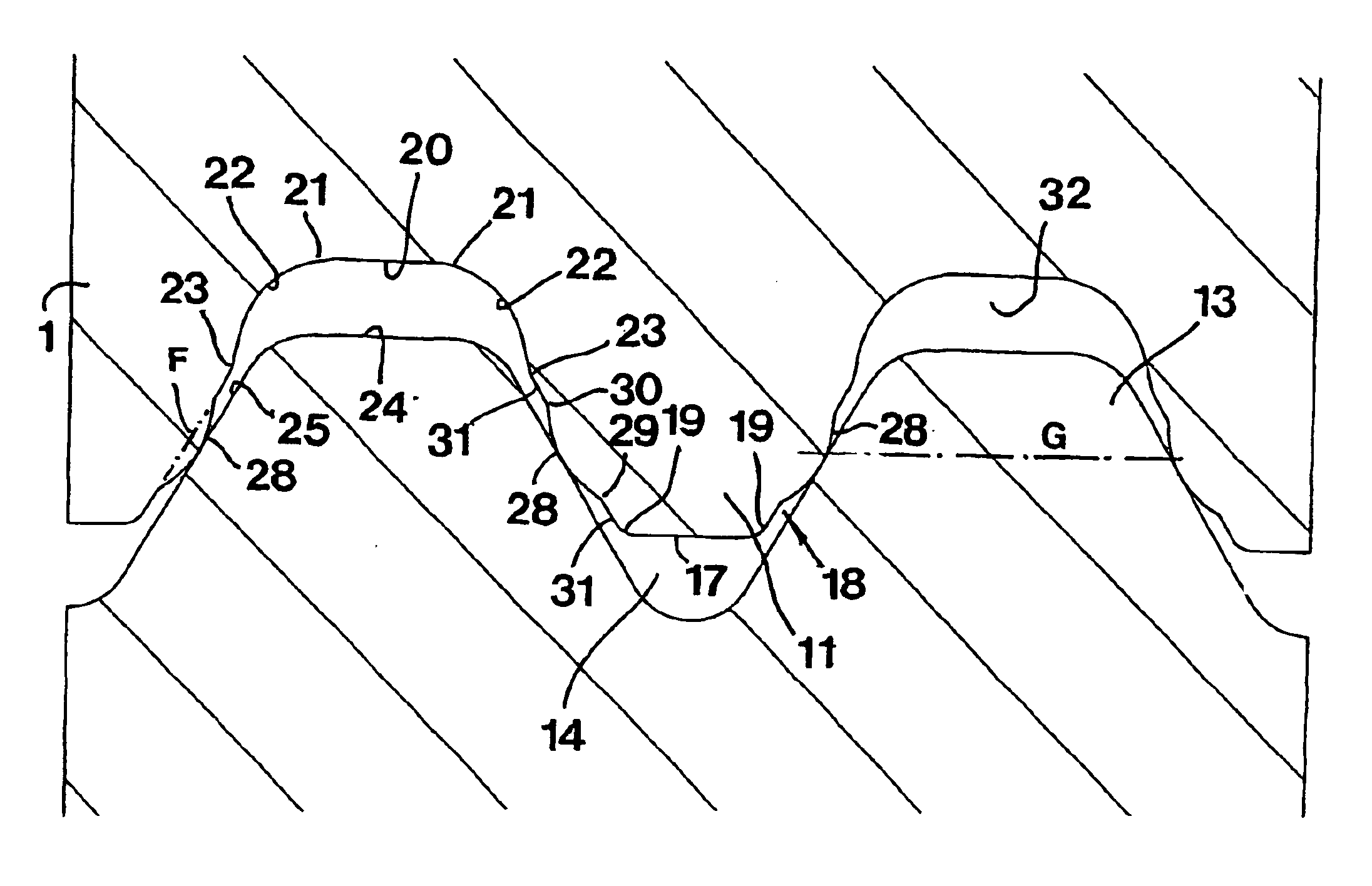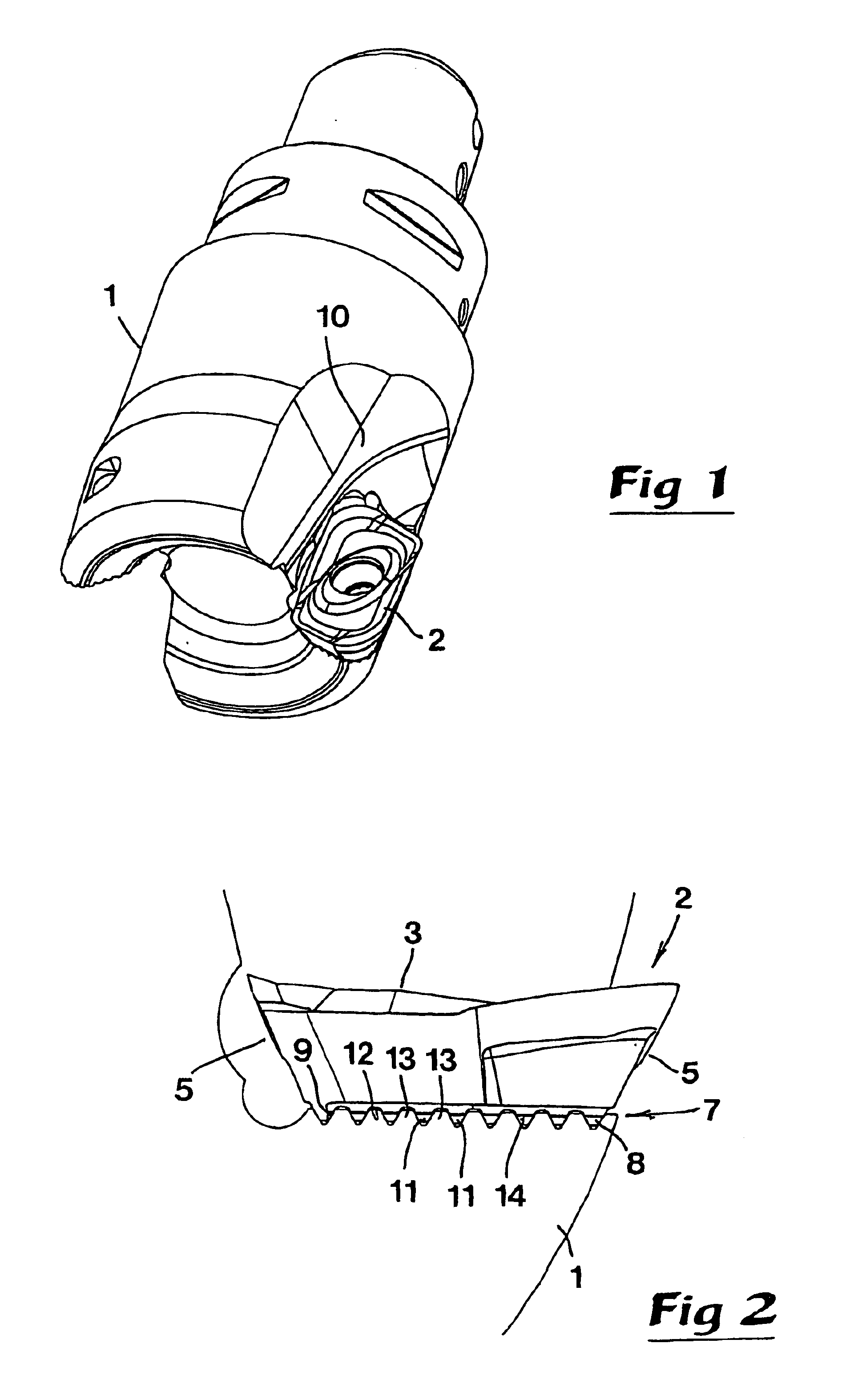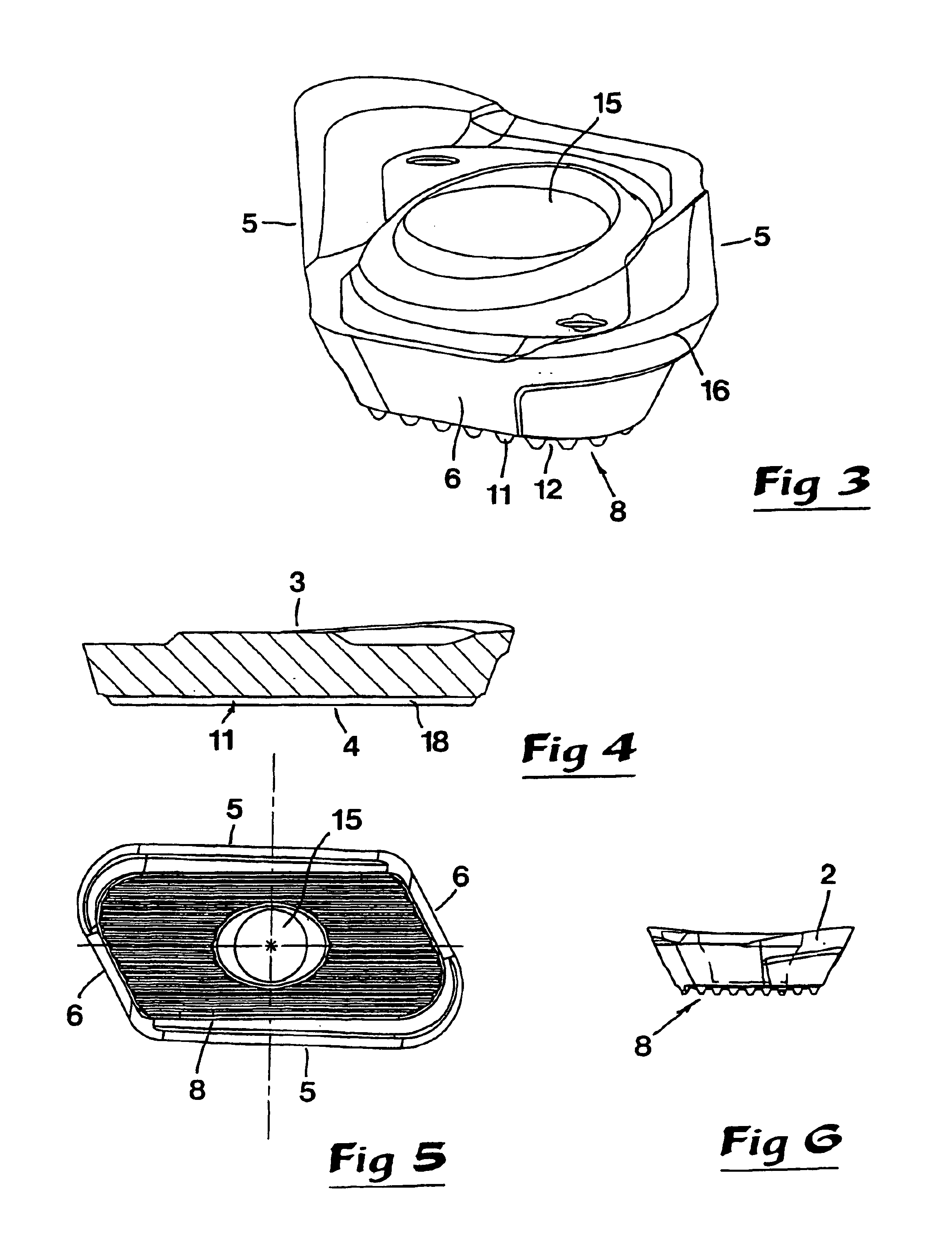Tool and toolholder for chip forming machining
a tool and tool holder technology, applied in the direction of manufacturing tools, shaping cutters, transportation and packaging, etc., can solve the problems of dimensional deviation, high rotational speed, and the inability of milling tools to be unlimitedly large in diameter
- Summary
- Abstract
- Description
- Claims
- Application Information
AI Technical Summary
Benefits of technology
Problems solved by technology
Method used
Image
Examples
Embodiment Construction
[0032]In FIGS. 1 and 2, numeral 1 designates a holder in the form of a milling head, which is part of a tool for chip removing machining. On said milling head, a plurality of cutting inserts are assembled, one of which is shown with the general reference designation 2. Although the geometry of said cutting insert may be fairly complicated, in particular on the topside of the cutting insert, the cutting insert consists of a flat cutting insert of the type, which has a comparatively limited thickness in relation to other dimensions. In FIGS. 2-6, numerals 3, 4 designate the top and bottom sides of the cutting insert, while 5, 6 designate two different types of peripheral sides, viz. long sides and short sides, respectively. Thus, in the example, the cutting insert is generally polygonally shaped. In round cutting inserts, only a single, circumfering side surface is found.
[0033]The cutting insert 2 is connected to the cutter head via an interface or a connecting interface, in its entir...
PUM
| Property | Measurement | Unit |
|---|---|---|
| distance | aaaaa | aaaaa |
| angle | aaaaa | aaaaa |
| radius R1 | aaaaa | aaaaa |
Abstract
Description
Claims
Application Information
 Login to View More
Login to View More - R&D
- Intellectual Property
- Life Sciences
- Materials
- Tech Scout
- Unparalleled Data Quality
- Higher Quality Content
- 60% Fewer Hallucinations
Browse by: Latest US Patents, China's latest patents, Technical Efficacy Thesaurus, Application Domain, Technology Topic, Popular Technical Reports.
© 2025 PatSnap. All rights reserved.Legal|Privacy policy|Modern Slavery Act Transparency Statement|Sitemap|About US| Contact US: help@patsnap.com



